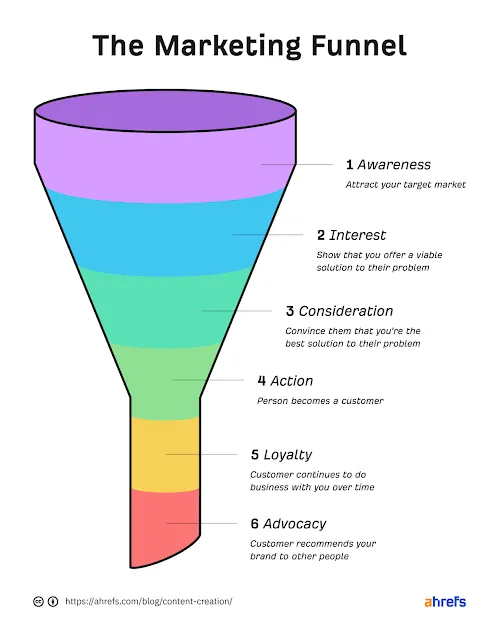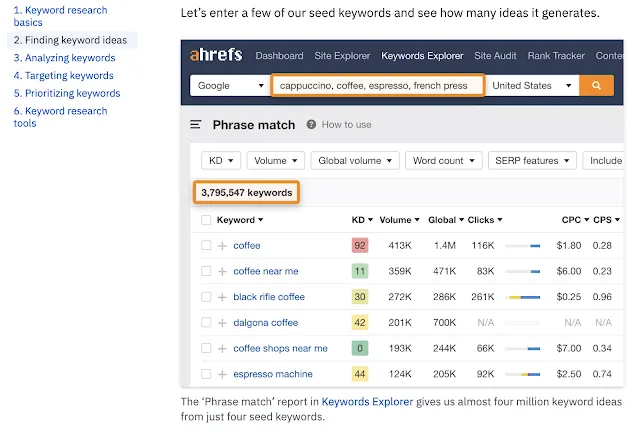SEO Friendly Website Content Creation To Attracted Users Step-by-Step Guide for Beginners. Types of SEO Great Website Content Creation by 2023. Plan, Create & Publish.
At Written Updatez, we write SEO friendly and unique content for you. We have many blog posts related to SEO factors for giving you meaningful & useful information.
If you find any mistake in this article then inform me by the comment box which is in the last of this article.
In this SEO friendly article, we cover the complete details about Website Content Creation, Types of SEO Great Web Content, Understand Keyword Research, Plan, Create & Publish.
What is Website Content Creation ?
Website content creation is all about creating interesting and informative content that is posted on a website to engage and attract visitors. It can take different forms like articles, videos, images etc. The goal is to provide useful information that helps build trust with the audience and also helps them rank higher on search engines. This includes researching, planning, creating, editing and publishing content tailored to the audience and optimized for search engines.
What’s the Importance of Content Creation ?
Content is important because it's an effective way to get people into your marketing funnel. If you're not familiar with the concept of a marketing funnel, it's a visual representation of the process of attracting and retaining customers.
 |
| Picture Credits |
People notice your brand first. Their interest and desire builds until they consider buying what you're selling. Eventually, they take action and become customers. If your product or service impresses them, they will become loyal customers and possibly even advocates for your brand.
But here's the thing:
Not everyone who knows your brand will want your product. Not everyone who wants your product will consider buying it. Not everyone who considers buying will buy, and not everyone who buys will become a loyal brand advocate.
This is why the marketing funnel is shaped like a chimney. People drop out of the process at every stage.
What does this have to do with content?
Content not only has the power to drive people into your marketing funnel, but also increases the performance of your funnel.
For example, our keyword research guide ranks highly on Google for "keyword research" and receives approximately 5,600 search visits per month. It attracts our target audience and improves brand awareness:
But that's not all this guide does. It creates interest and desire for our product by showing readers how to solve their problem using ahrefs ?
Of course, most readers will not consider buying our product and taking action after reading this post. This is why we have many blog posts. We create interest and desire through repeated exposure to our products and brand.
For readers who make it to the consideration stage of the funnel, the ahrefs vs. page spurs action by showing how our product stacks up against the competition.
For those who become customers, our blog posts, courses, and dedicated help section earn loyalty and promotion by teaching them how to get the most out of our product.
Who is the Content Creator ?
A content creator is someone who produces and publishes various forms of content on various platforms, usually online. This content can take many forms, including written articles, blog posts, social media updates, videos, podcasts and more. A content creator's goal is to engage and inform their audience by creating unique and engaging content that resonates with their target demographic.
Successful content creators often have a strong understanding of their niche, an eye for detail, and excellent communication skills. They also stay up-to-date with the latest trends and techniques in their field to stay relevant and reach their intended audience.
Types of Content Creator
News organizations
Colleges, universities, and think tanks
Companies
Artists and writers
Government
Users
Teens
How to create content?
The content creation process is pretty much the same for all channels, and we'll cover that below. But first, it's important to understand that you shouldn't jump into content creation without first creating a solid content strategy.
Your content strategy keeps you on track and ensures that there is a clear purpose behind all the content you create.
Here's how to create content in three steps:
1- Look for proven themes.
If you are creating content for your website or YouTube… (YouTube SEO for Starters)
…you might want to do some keyword research to find the topics that people are searching for.
You can post content on other topics, but you'll have a hard time getting noticed unless you already have a lot of traffic or subscribers, are willing to pay for ads, or don't have a proven distribution channel like a large email list.
The way you research topics is almost the same for both channels:
a) Brainstorm about topics
b) Use a keyword research tool to expand your ideas.
c) Check competitors.
2- Choose a variety of content and format.
If we do this for "SEO Tips", we can tell by titles, URLs and descriptions that the results are all blog posts:
If we do this for "Keyword Rank Tracker", the results are mostly landing pages with interactive tools:
Content Types - What types of content are there?
Blogs/Articles: These can take many forms, from groups of content and feature articles to short breaking news, lists, and guides of 3,000 words or more.
Page Level: The main service/product pages of your website. This is usually where people find the information they need to become a client or customer.
Case Studies: Content that demonstrates successes with your business or someone else's.
Whitepapers: highly granular pieces that provide solutions with data on how to solve a specific problem – explain how to use Semrush to create a content strategy.
Infographics: Graphics that attract the eye and explain the visual value of something. Remember that they are not crawlable, so always use great alt text when uploading. Infographics are perfectly paired with well-written content, such as a blog or case study.
Videos: Who doesn't love videos? Like infographics, videos are also anonymous. Videos should be optimized for each channel with appropriate tags and titles, and can complement an article, blog, page, or other type of optimized written content.
Content format
Even if your chosen channel limits the type of content you can create, you usually have a few options when it comes to content format, including:
How-to
Tutorial
Listicle
Guide
News/update
Brand story
Poll
Review
3- Plan, Create & Publish
The process of creating your content is basically the same regardless of the desired channel, type and format.
Planning
Planning begins with creating an outline. If you're creating short social media posts, this may not be strictly necessary. But it's definitely the best method for more complex types of content like blog posts and videos.
This is how we start almost every post and video we publish.
For example, my plan for this essay is:
Creation
With your outline nailed down, it's time to put your head down and clean up your content.
We've shared tips and tricks for doing this effectively in various posts, but here are some tips to get you started:
Just write: It's easy to procrastinate and stare at the blank page for hours. I've done it a million times. Cope with this by forcing yourself to write without editing. Even if you think what you're writing is silly, don't hold back. Keep writing.
Use a proven intro formula: Your intro is the most important part of your content, but also the most difficult. Counter this by using a proven introductory formula like the PAS formula.
Use the Inverted Pyramid Method: Most people bury important information under "good to know" fluff. Don't do that. Make "need to know" your mission before "nice to know." Everyone who uses your content will thank you.
Publish
Finally, the easy part. Format, finalize and upload your content to the channel of your choice, and you're off to the races. That being said, the process often has more moving parts than you might imagine, which obviously brings me to…
Some questions we recommend asking yourself during the planning phase:
Who am I addressing with this content?
What stage of the buyer's journey will this content address?
How much time and money can I invest in creating this content?
What additional support or resources will I need to bring my vision to life (a designer to create infographics, a video producer to create scripts, etc.)?
Is the content I'm creating timely? Or is this piece of content evergreen?
How does this content fit into the grand scheme of my content strategy?
What audiences or customer groups will this content serve?
Who will this content help in my organization?
How to generate content ideas.
Find opportunities through keyword research: Keyword research is a great way to find out how your audience is talking about a topic. Additionally, keyword research can help you find new content opportunities that you might not have considered on your own. And you can use a keyword's Monthly Search Volume (MSV) to estimate the amount of organic traffic you'll receive if you finally start ranking for the terms you're looking for. want to write
Ask for customer feedback: Asking your customers might seem like an easy way to get ideas, but they often have questions about your product or your niche that you can't answer. Creating content around these questions will have a direct and significant impact on your existing customers.
Put yourself in your audience's shoes: As a salesperson, your first responsibility is to understand your customer. So when you're looking for new ideas, think about what your client might find attractive, interesting, or useful. Then explore how those ideas can work with your content strategy. You can check out sites like Quora to find out what topics people in your area of expertise are asking about.
Brainstorm with larger groups in your organization: Knowledge of your entire organization is a powerful tool that can be used when generating new content ideas. For example, your customer support team has a lot of knowledge about the day-to-day problems of your customers. Your sales team has a deep understanding of the solutions that potential customers need or want to hear about the most from you. Reaching out to other groups in your organization will help you identify content ideas that meet the needs of your customers (and potential customers).
Research what your competition is writing about: As a content creator, you should always be aware of the topics that your identified and unknown competitors are writing about in your niche. Understanding how your competitors approach a topic will help you differentiate your brand's voice, focus, and content, identify gaps in your content strategy, and improve your content. It will help to highlight the sales process.
How to do keyword research?
There are dozens of opinions and different perspectives on how to best do keyword research. If you're just getting started, this beginner's guide to keyword research can help.
Once you've got the basics down, use the tips below to level up your keyword research game.
1. Create a buyer persona and target keywords towards that persona
2. Focus on 80% evergreen keywords; 20% trending keywords
3. Don't go crazy about the volume.
4. Always use “relevant keywords”.
5. Monitor keyword performance on a weekly basis.
Closing Words
Successfully scaling the production of high-quality content can have a huge positive impact on your business. We're living proof of that, as are many other companies that have taken a similar approach to content, like Buffer and Wise.
But remember: don't fall into the trap of creating content without a solid content strategy. This is a surefire way to waste time, money and resources.








No comments:
Post a Comment